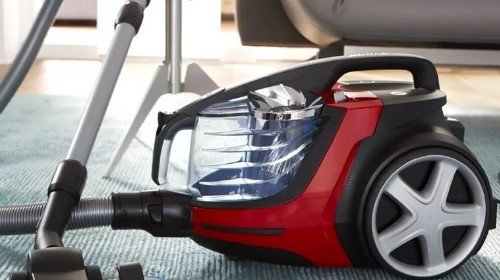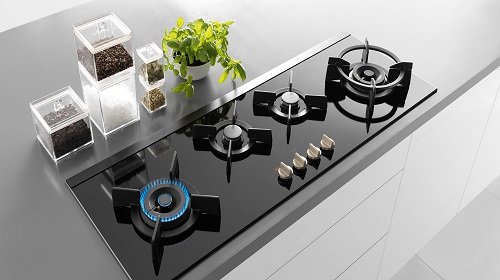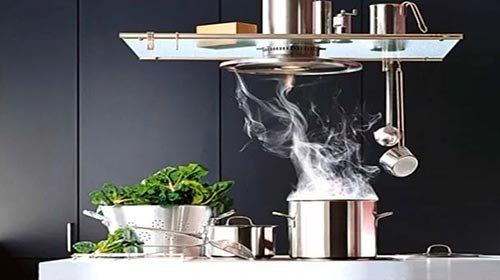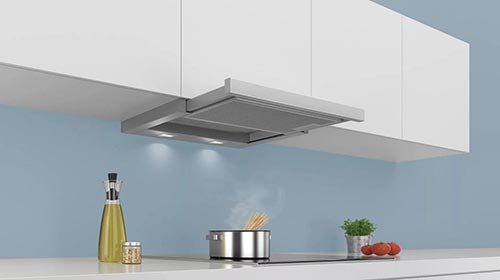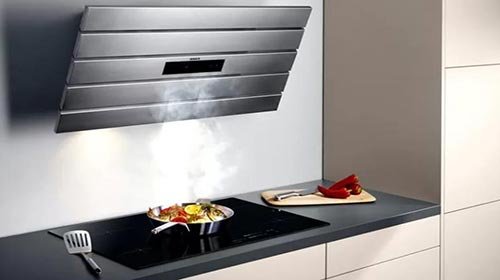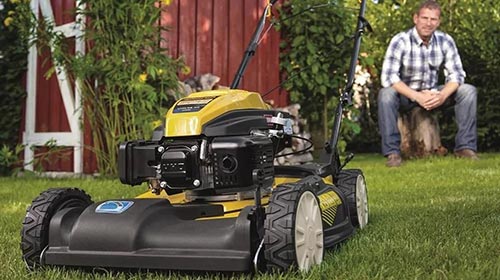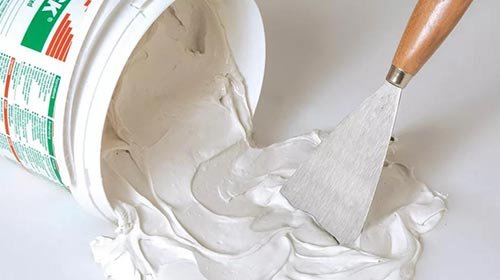Modern kitchen is difficult to imagine without a high-quality hood, which does not allow burning and smell to spread throughout the apartment. The hood can be extremely simple, but to cope well with its functions or stylish, harmoniously combined with the interior design. In any case, the main requirement for this device is effective air purification. To choose a quality hood you need the advice of professionals, user reviews, knowledge of basic parameters. This article was written specifically to make it easier for you to choose the optimal model.
Content:
Types of hoods
Which hood is better to choose - circulating or flow?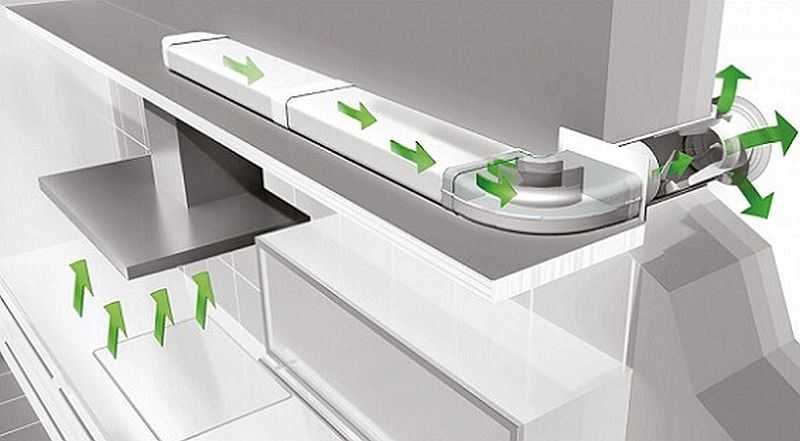
All extracts function according to a general principle - as a result of forced ventilation, the air is cleared of particles of fat and burning. In some models, he undergoes a cleaning procedure and again enters the kitchen, in others - is displayed on the street. By this parameter all exhaust devices can be divided into two types.
- Circulating. The air is drawn in, cleaned and fed back to the kitchen. Devices of this type have many advantages - there is no need to install an air duct, they are easy to install. Circulation hoods work quietly (up to 40 dB), do not interfere even within a small kitchen.
- Flowing. The principle of their work is somewhat different - they tighten the kitchen air, partially clean it and take it outside the apartment. In such hoods, coarse filters are usually installed to protect the internal elements of the device from grease. From time to time they need to be cleaned. There are no such filters in absolutely cheap models, so they should be cleaned regularly. According to the advice of professionals, it is better to purchase flow-through hoods, since their productivity is much higher. The main disadvantage is the complexity of installation.
Constructive decisions
Which hood to choose, which is better - traditional, built-in or dome?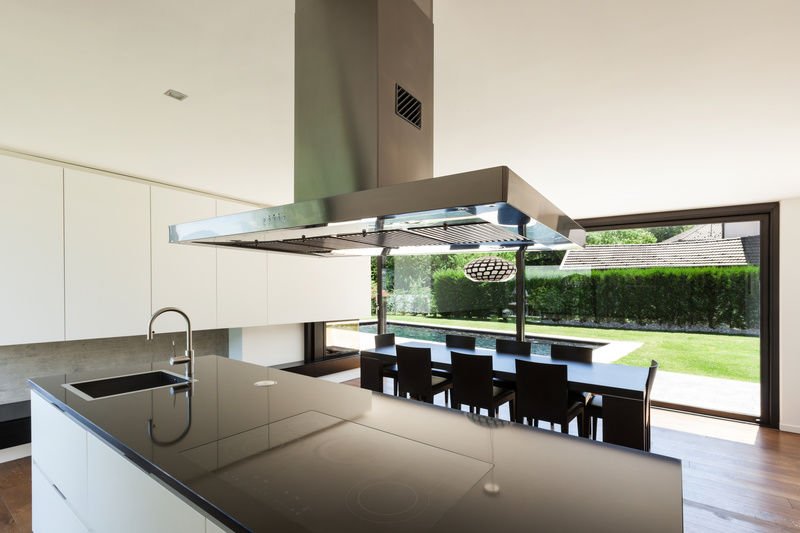
Kitchen hoods differ not only in the principle of action, but also in their construction. Home appliances stores offer many different models. Our advice will help you to understand all this diversity.
- Traditional. One of the very first, elementary and inexpensive options. Hood is fixed above the stove on the wall. Most of the models operate on the principle of recycling, but there are flow-through devices. Traditional circulation hoods are inexpensive, but they often have to change filters.
- Inline. More modern and functional models for embedding in the kitchen. Many of them have a sliding panel to increase the working area and performance. They cost a little more than traditional models, but not by much, therefore, of these two options, it is better to choose the second. Stand alone built-in hoods, mounted on the tabletop. One of the advantages is the best elimination of odors, as they pick them up already at the level of the slab, preventing them from rising upwards, and an interesting design solution. Of the minuses - the higher cost and reduction of the useful area of the working area of the kitchen.
- Domed. Very effective in terms of burning and odor. There are several types - mantel, island and corner. Models of the first type are called so because of the form, which resembles the exhaust system of the fireplace. They are large in size; many manufacturers think over unusual design options. This leads to an increase in price without improving the technical characteristics. Corner hoods, as the name implies, are intended for installation in a corner. They should be used when there is a shortage of space in the kitchen.But the range of corner hoods is not very large. The latter type (island) can be fixed in any part of the kitchen - the wall is not a prerequisite for installation. They are intended mainly for working areas of island-style kitchens. The price of them is much higher compared to other options, but they significantly benefit in power and design.
Manufacturers
Which manufacturer to choose? Who produces the best hoods?In order for the hood to serve you for a long time and properly cope with its functions, it is better to choose a model that has been proven over the years by a well-known manufacturer. In the field of traditional and built-in kitchen hoods, there are several well-established brands. Based on the advice of professionals and user reviews, we have compiled a small list of reliable and popular manufacturers.
- Bosch. Under the German brand hoods are available all of these types. The manufacturer pays attention not only to the quality and functionality of devices, but also to their design. It provides for various installation methods. In the assortment of the company there are island, built-in, wall models. All of them have excellent performance, are easy to operate and reliable. The brand is not the cheapest, but if funds allow you, you should choose it.
- Hansa. Among the advice of professionals, there is often the opinion that the Hansa hoods deserve no less attention. The origins of the brand begin in Germany, but equipment is produced in Poland. The main advantages of the brand are high performance and durability. Judging by the user reviews, extracts of this brand do well with any odors even at low speeds. Many models are complemented by pleasant LED-lighting. Often used special sensors to automatically turn on in the event of smoke or burning.
- Elica. Italian brand that produces models for every taste and wallet. They have excellent performance, exquisite design, excellent quality. Users appreciate the products of the manufacturer for ease of management and functionality. Under this brand appeared one of the first built-in models. Many hoods are complemented by halogen lighting and sound absorption systems.
- Siemens. The company often uses air pollution sensors for its models, which significantly increases the efficiency of their work. The device quickly absorbs all odors, but it works very quietly even at maximum speeds. An additional plus is the built-in LED modules.
- Gorenje. Slovak cooker hoods. The manufacturer produces both low-end devices and premium models. Most models are productive, comfortable, effective, but if you want to choose a cheap hood of the brand, first carefully read the reviews. Among the budget models come across not the most successful devices.
- Hephaestus. The Belarusian company in most ratings undeservedly stands aside, although the technical characteristics, design and functionality are not inferior to more expensive foreign brands. The manufacturer offers built-in, wall, ceiling models. Of the benefits, users note the ease of control, high performance, convenient backlighting. For most models, settings are made from a keypad.
Exhaust power
Which hood is better to choose?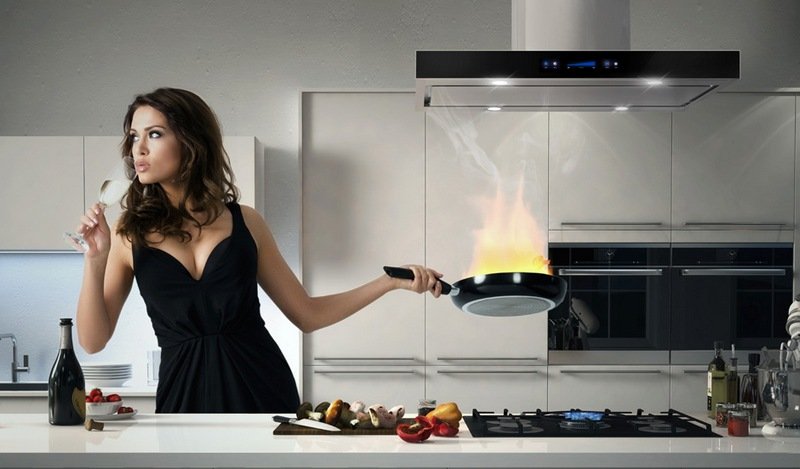
The main indicator characterizing the efficiency of exhaust - its power. This parameter indicates how much polluted air a device can handle in a certain unit of time. To choose the right power, you need to know exactly the area of the kitchen and some of its features.
The calculations are not very complicated. First, the volume of the kitchen space is calculated - for this, the height of the ceiling is multiplied by the area. The resulting figure is multiplied by 12. In accordance with sanitary norms, it is the number of times in an hour that the air in the kitchen should be updated or cleaned. The result is multiplied once more - now by 1.3. This is the safety factor. It turns out that for a small kitchen about 6 m2 with a standard ceiling height (2.7 meters), a power (capacity) of about 253 m is needed3/hour. In addition, there is another important rule that must be observed - the optimal distance from the surface of the plate to the exhaust should be 65-85 cm. If you plan to place it higher, take power with a margin. A small margin of performance will be required for a small kitchen, since the concentration of burning and soot in a confined space will be much higher.
Hood dimensions
How to choose the size of the hood, which is better than 60 cm or 90 cm?
On sale you can find hoods of various sizes - under standard and non-standard stoves. The device should have the same width as the plate or a little more. For example, for a standard plate 60 cm wide, it is worth choosing an extract of 60 cm or 90 cm. The second option is possible if the design of the furniture allows it and the kitchen area. Manufacturers offer models of very different widths, but 60 cm is the most common size. You can find large-size hoods, but there are very few compact models for sale - this is not the most popular option.
A little safety advice. The distance from the working surface to the hood over the electric stove should be at least 65 cm, above the gas model - from 75 cm. If you hang it below, due to strong heating, there will be a risk of ignition of fat deposited on the grill.
Cost of
How much is a hood, budget or expensive model is better to choose?Hood - one of the few devices for the kitchen, the cost of which varies in such a wide range. If you are limited in funds, then you may well be fitting a budget model from 2,000 rubles. Many economy class hoods are offered by the Russian company ELIKOR. Despite the low cost, the devices do quite well with their intended purpose, although they cannot boast of increased functionality. Having on hand a sum of up to 5,000 rubles, one can also consider low-end models of such brands as Gefest, Darina, Hansa, MBS, Kronasteel with a capacity of up to 500 m3/hour.
With an amount over 5,000 rubles, the choice is much larger. It is already quite possible to choose not just a productive, but also a functional model of such well-known brands like Gorenje, BEKO, Bosch, Indesit, more advanced devices from the company Hansa. Models worth over 15,000 are offered by almost all well-known manufacturers. In this price category, you can look not only at the performance and functionality of the models, but also choose the most appropriate design.
Filters
Which hood to choose which filters are better?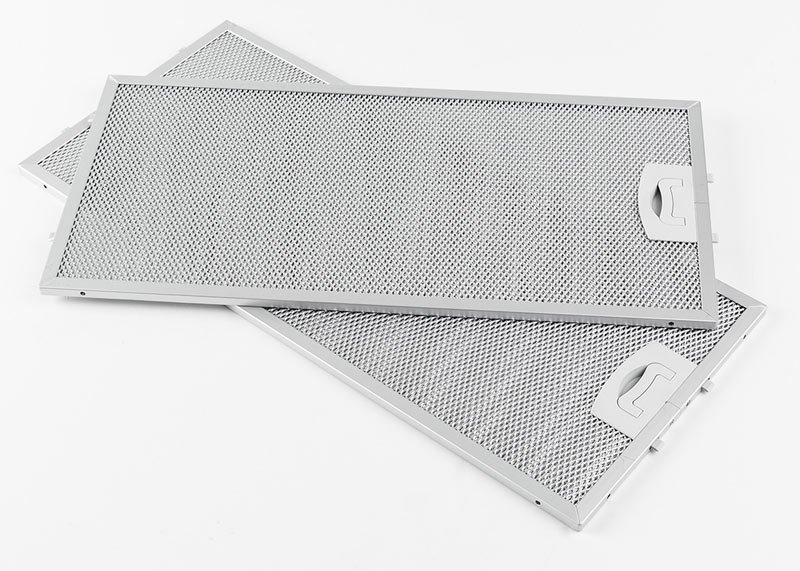
Depending on the type, principle of operation, extraction modes, different filters are used. In some models, filter elements are completely absent, but judging by the advice of specialists, it is not worth purchasing such devices. Fat will settle on the engine, which will gradually lead to its failure - even regulatory washing of the hood will not help. Therefore, it is better not to buy absolutely cheap models. Filters are of different types.
- Coarse cleaning. These are metal nets that trap fat particles. They are part of the device, not a consumable, and therefore are used throughout the entire period of operation. Manufacturers make them removable for easy care. Periodically, the grid should be removed, thoroughly cleaned of fat deposits and set in place. The main purpose of this filter is to protect the engine from grease.
- Synthetic mesh. Used in flow models to improve the quality of air purification. Synthetic meshes are subject to periodic replacement.
- Carbon fine filters. Often installed in circulation hoods to quickly neutralize odors. They work effectively, but they need to be changed regularly.
Sometimes hoods are equipped with an alarm system - she herself tells the user when to clean or replace the filter. It is implemented using light indication. In simple, cheap hoods alarm is not provided.
Control method
Which way to control the hood is better to choose, touch or button?
There are three ways to control - standard buttons, slider buttons (move to the side) and from the touch panel. Each method has both pros and cons. The most simple to use models with buttons. With their help, the hood is turned on and off, modes of operation are set. One of the advantages is the simplicity of control, the lack of sophisticated sophisticated electronics, which often fails, the low cost of models. On the other hand, the functionality of such models is very limited.
More expensive sensory models open up new possibilities for users. They are equipped with a small display, which displays the modes of the device at the current time. From it, the necessary settings are made. Electronic hoods are equipped with a timer, automatic shutdown and mode switching. The most advanced models independently, without a user command, change the mode of operation, the speed, depending on the humidity and temperature indicators, automatically turns on when smoke detectors pick up.
Noise level
How to choose the quietest hood, which volume is better?Noise in the exhaust hood is created mainly by operating fans. In kitchens combined with the living room or with frequent use of the device, it is better to give preference to the quietest models, the volume level of which does not exceed 45 dB. The maximum maximum is 50 dB. If the hood works louder, it will be very difficult to be in the room. Therefore, no matter which model you choose, which manufacturer, always pay attention not only to power, but also noise level.
Taking into account the wishes of users, manufacturers are trying to reduce the volume of work hoods to a minimum. Different methods are used for this — instead of one powerful fan, several smaller ones are installed. The noise in them is reduced by reducing the speed during rotation. Anti-vibration pads, which separate the motor from the case, help make the device quieter. There are also expensive, but completely silent models - their motor is installed at the exit of the ventilation duct, located outside the kitchen.
Additional functions
Hood with a set of functions is better to choose?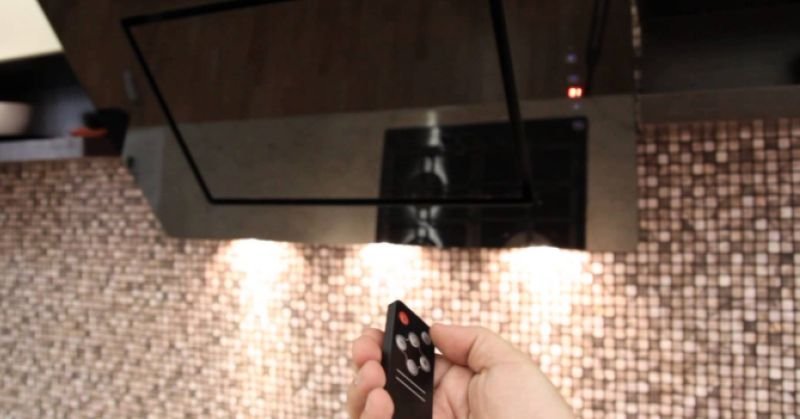
Hoods of the middle and high price range are equipped with additional options, most of which are very useful - they not only simplify the management of the device, but also ensure the constant maintenance of clean air in the kitchen.
- Residual fan stroke. After the user disconnects, the hood still works for some time to remove all foreign matter from the air.
- Interval inclusion. The device can be configured to turn on for a few minutes at regular intervals. This ensures continuous purification of the air, maintaining its freshness.
- Timer. You can set the exact time after which the hood must turn off.
- Intensive mode. In total, modern hoods provide for up to 15 modes (speeds) of work. Some also have an intensive mode that can be used to remove particularly strong odors.
- Remote control. Some electronic models can be controlled using the remote. The work of especially expensive and functional extracts is controlled using a special application on a tablet or smartphone. The user can monitor the operation of the device, change the settings, even if at this moment is far from home. Conveniently, there are notifications of excessive smoke and the need to replace filters.

